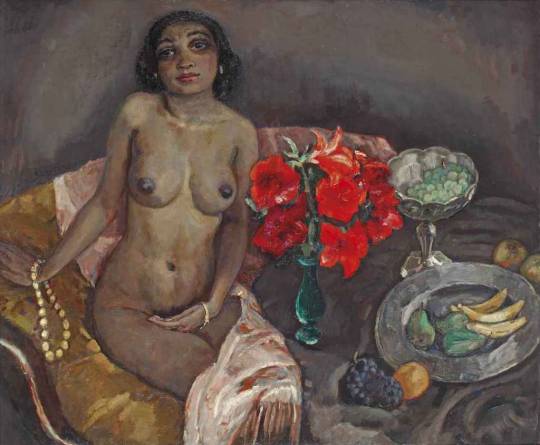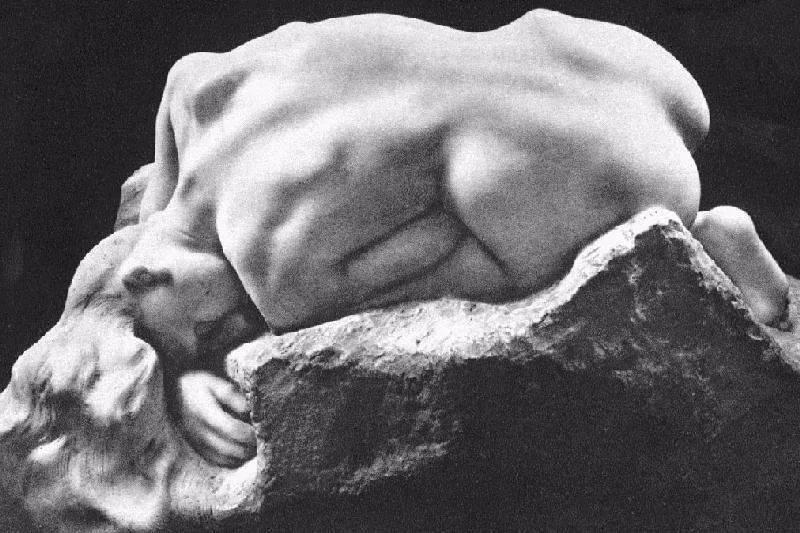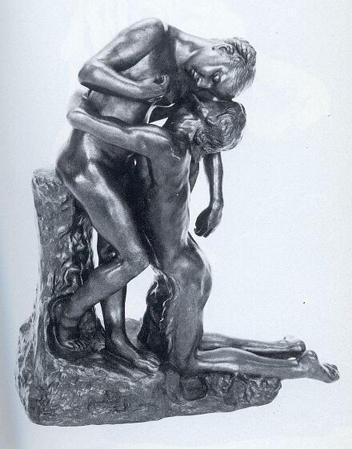Sleep and dreams are the realm of the unconscious, making them of particular interest to Freudian psychoanalysis and surrealist artists. Sleepwalking can be seen as a physical manifestation of this unconscious. The surrealists believed that the subconscious of sleep could be tapped into and used as a source of artistic creativity. This reached a culmination in automatism, the act of creating art from the unconscious mind. It is a term is borrowed from physiology, where it describes bodily movements that are not consciously controlled like breathing or sleepwalking. Freud used automatism in the form of drawing to explore the unconscious mind of his patients. André Breton who launched the surrealist movement in 1924 defined surrealism as ‘Pure psychic automatism … the dictation of thought in the absence of all control exercised by reason and outside all moral or aesthetic concerns’.
Dali’s ‘Sleep’ could be seen as an attempt to translate the dream world onto canvas. The spindly crutches, a Dali trademark, suggest instability before the inevitable collapse into sleep. The head hangs limply like a body in slumber. Dali said ‘I have often imagined the monster of sleep as a heavy, giant head with a tapering body held up by the crutches of reality. When the crutches break we have the sensation of falling.”’ Apparently Dali saw sleep as time ill-spent, and sought to overcome this drain on his creativity. When he felt sleep coming on he would sit holding a key poised above a metal plate on the floor. As soon as he nodded off the key would slip from his fingers and clang against the plate – waking him immediately. The painting ‘Sleep’ might be a rendering of this sensation and his rocky relationship with sleep.
Dali, Sleep, 1937.
Another surrealist, Rene Magritte explored the theme of sleep and the unconscious in his work. In ‘Reckless Sleeper’ a figure sleeps in a dark cloudy sky, above a stone tablet embedded with seemingly random objects. Magritte’s work often features banal, ordinary objects in extraordinary situations. These objects may represent the dream of the sleeping figure, and can be read as Freudian symbols. Although the equally spaced and clearly illustrated objects are reminiscent of children’s storybooks, there is an atmosphere of unease and disorientation, leading to an alternative comparison with a police crime recreation. The sleeper is contained within a coffin like box, which alongside the stormy sky suggests the painting may be a visual interpretation of a nightmare more than a dream.
Magritte, The Reckless Sleeper, 1928.
Paul Delvaux’s encounters with contemporaries such as René Magritte introduced surrealistic influences into his work. Like the surrealists, he was interested in exploring humanity and the hidden depths of the subconscious. He expressed this using bizarre subject matter rendered naturalistically rather than abstraction. The believability of his style adds to the uneasy feeling of his scenes. Delvaux didn’t give as much importance to Freud’s psychoanalytic ideas as the surrealists. He stated that he did not aim to paint his dreams but rather “to transcribe reality to make it into a kind of dream.” He was also interested in the relationship with the alter ego. The imagery of ‘The Dream’ brings to mind an out of body experience - that which typically involves a feeling of floating outside of the body or perceiving one’s physical body as if from the outside, initiating a lucid dream state. His use of the woman to represent this is significant as Delvaux’s relations with women were troublesome (he had a domineering mother, a platonic affair and an unsuccessful marriage). Thus he represented women as mysterious and beautiful but unobtainable. ‘The Dream’ could be read as the mystery of the woman’s subconscious mind.
Paul Delvaux, The Dream, 1935.
















